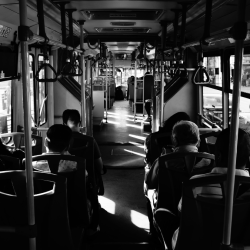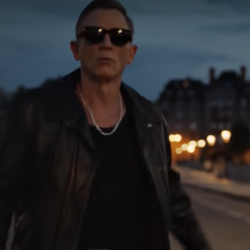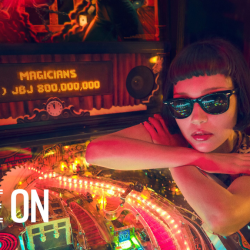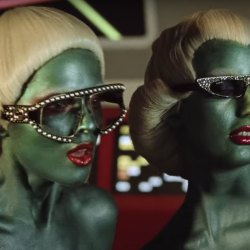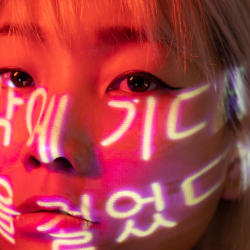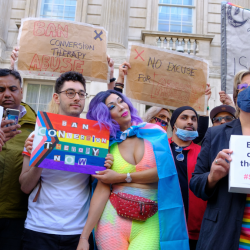It remains — in my opinion — the most powerful and compelling way to connect, not just to consumers but to your fellow human beings, by sharing authentic stories. For example, Dove’s campaign “Courage is Beautiful” (below) dedicated to all healthcare workers during the pandemic, shone light on what people are experiencing working in hospitals. It united communities and generations — it was a story that left a mark on everybody. And this is how we evolve as people, by learning experiences through the power of the media.
Increasingly, stories are the key to credibility and memorability where the modern consumer is concerned. When we start working with any client, we begin with their origin story. Even if this does not become an outward-facing part of their brand messaging and identity, it undoubtedly influences it. By way of example, we used this approach with the Girls’ Day School Trust movement. Its new logo illustrates GDST’s commitment to “diversity, inclusion, and real change” and unites the trust’s 25 schools and flourishing alumni network under one recognisable word — “undivided”. It’s a story about the sense of equality and harmony that the GDST wants to evoke.
Word of mouth is still the most effective way of marketing, and giving consumers a ‘tale to tell’ about a brand is a gateway to being discussed amongst a conversation with friends. So without an authentic story, your brand will struggle to be talked about.
It’s not just the story, but the way you tell it
The same joke told by different comedians will elicit different responses. The issue with modern media is brevity. A generation raised on posts and ‘140 characters or less’ is not best placed to understand or appreciate the nuances of plot and narrative. And yet they can cheerfully binge watch their way through hours of a Netflix series. Go figure.
However, to me there’s no difference between a TikTok, and a five-act play. To engage the viewer, you still need to catch their attention. Simply tossing out images of a young person enjoying themselves doesn’t work. What’s the hook that draws you in? And let me tell you, it’s not a cat. Then, how do you take the listener/viewer with you? Even if we are just talking about 10 or 15 seconds, it’s all about rhythm.
With such a short attention span, you’re going to lose a Gen Z’er if you don’t follow a narrative arc the way Shakespeare did. What can you add after the initial interest to keep people engaged? And then for the final act? So many posts, stories, and videos I see on social media lack the need for any resolution or dramatic, entertaining, funny, memorable full stop. That is the point of a story — the end.
That is how your brand message and identity remain in the mind of the audience when they are scrolling on to the next post. And that is why good storytellers are hard to find. Knowing what to say, how to say it and when to say it is a craft. There’s an awful lot of noise about storytelling being important to brands, but I don’t see much evidence of great storytelling. It has all but vanished from its natural home; the tele advert, to be replaced by a procession of mood videos. For example, aviation advertising went from stylish experiences in the sky leading to tropical beaches to talking Ryanair planes on TikTok. The customer journey got removed in favour of 10-second scrolling.
Online marketing should be the perfect environment to weave interesting narratives, but again, people seem to default to a quick visual fix. Fast food, rather than a meal you’ll remember. Can’t we learn from Netflix? If you can make a three-dimensional story with a good plot, you’ll have the viewer’s attention for as long as you want.
The trend to hop on social issues
Brands are having their metaphorical limbs crushed in the stampede of virtue signalling, without diving deep into the perspectives of the intersectional communities they are campaigning to reach. ‘We’re donating X amount of money to Y cause’ OR ‘We’ve reduced the amount of plastic by Z% in our packaging’. Everyone is trying to be more ethical and sustainable — it’s table stakes. A good thing, but it’s the price of entry these days.
When it comes to storytelling, people don’t want to hear the same old tale. They don’t want to hear that as a brand you behave ethically — they expect it. Tell them something new, or surprise your consumer by reinventing an existing brand message. Learn from movies. Batman was camp in the sixties, moody in the 90s and flawed in the noughties. But people keep coming back to the story and the character, because of the many different ways his tale is told. Today’s consumers are savvy and smart, and rightly so — but it means you can’t get away with anything. They’ll just see through it.
People like stories about how things are made and the people who make them. Tell those stories, if they are interesting. Tell people about how you make your shoes, not the amount of carbon it took to make the boot. That can be covered by a line on the packaging, or an info page on the website.
Use the budget for marketing and branding to tell stories that deserve the time, standout, and investment.
Featured image: Jake Hills / Unsplash























